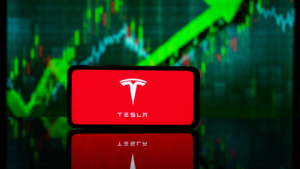For example, when an analyst upgrades a stock, he/she is suggesting a stronger performance or more favorable outlook than previously anticipated. As a result, this action often leads to an immediate increase in the stock price. That happens because the upgrade is seen as a validation of the company’s potential, making the stock more attractive to investors.
Conversely, a downgrade can lead to a quick decline in the stock price, as it signals concerns about the company’s prospects or macro headwinds.
Upgrades and downgrades also affect overall investor sentiment. An upgrade can boost confidence, leading more investors to buy into not only the specific stock but sometimes also the sector or the market as a whole.
Similarly, a downgrade might raise caution, prompting selling activity that extends beyond the individual stock to other similar stocks or sectors. Stocks might swing widely as investors react to new information and adjust their positions accordingly.
While the immediate effects of upgrades and downgrades are noticeable, their long-term impact can be more balanced. Here we look at three stocks that saw their prices move in recent days on the back of the hot Wall Street analyst upgrades.
Apple (AAPL)

Bernstein analyst Toni Sacconaghi, highly respected on Wall Street for his cautious approach, upgraded Apple (NASDAQ:AAPL) stock’s rating from Market Perform to Outperform, maintaining a price target of $195.00. The upgrade places Apple among other stocks with analyst upgrades, attracting investor attention.
Sacconaghi’s analysis comes at a critical time when Apple stock has traded under pressure, primarily due to a disappointing iPhone 15 cycle and ongoing concerns about its business in China. Additionally, Apple experienced a sharp 24% drop in iPhone sales in China during the first six weeks of 2024, amidst tough competition and pricing challenges.
The analyst believes the issues in China are cyclical rather than structural, emphasizing that Apple’s operations in the region have historically been more volatile due to its consumer base’s high sensitivity to new features.
He anticipates that upcoming improvements, including much-anticipated generative AI features in the next iPhone iteration, could significantly bolster Apple’s market position. That is very likely to lead to a re-rating in Apple stock.
Bernstein projects a robust growth in iPhone sales, estimating a 10% year-over-year increase to 248 million units in 2025, surpassing the consensus forecast. Heading into the second quarter results, Sacconaghi suggests the guidance of approximately $80 billion in revenue for FQ3 could act as a pivotal moment for Apple stock.
“We believe guidance could serve as a clearing event for the stock, similar to 2023 and 2019,” the analyst said.
“Moreover, AAPL is entering its seasonally strong trading period — the stock has outperformed in the 3 months leading into the iPhone launch in 15 of the last 17 years and by an average of 1,280 bps.”
Snap (SNAP)

HSBC analyst Mohammed Khallouf double upgraded Snap (NYSE:SNAP) stock, elevating the rating from a Reduce to a Buy rating. This rate, a significant shift in the analyst’s rating system, reflects a positive outlook driven by several key factors identified by HSBC analysts. Snap shares surged last week on the back of the stronger-than-expected earnings report.
The analyst points to a broad-based recovery in global advertising demand and pricing as a primary catalyst for the upgrade. Moreover, Snap’s direct-response advertising solutions are gaining increased traction, contributing to the company’s revenue growth.
Another positive indicator is the continuing momentum of Snap+, the platform’s subscription service, adding to its financial stability.
Khallouf has raised his price target for Snap to $15.10, based on a revised revenue compound annual growth rate (CAGR) forecast for 2023 to 2028, which he increased from 12% to 15%.
On the risks side, the analyst mentioned the fragile macroeconomic recovery, potential competitive gains from increased AI investment by rivals, and internal competition where Snap’s newer “Spotlight” product could cannibalize its higher-margin formats.
Tesla (TSLA)

In another major move last week, Bank of America (NYSE:BAC) analyst John Murphy upgraded Tesla (NASDAQ:TSLA) from Neutral to Buy while maintaining a price target of $220.00. This analyst move follows Tesla’s Q1 results, which surpassed expectations and provided clarity on several concerns that investors had before the earnings release. The upgrade places Tesla among other prominent stocks with analyst upgrades, reflecting a bullish sentiment.
Murphy highlights that the better-than-anticipated results, combined with reassuring comments from Tesla’s management, are helping to improve the sentiment on Tesla stock. These factors have contributed to a more favorable outlook for Tesla, prompting the upgrade.
The analyst sees a “windup of positive catalysts” building for the electric vehicle (EV) company. That path likely includes upcoming product launches, potential market expansions and technological advancements (like self-driving technology) that could further drive Tesla’s stock price upwards, BofA said.
On the other hand, Bank of America’s upgrade move comes despite a series of senior executives who have reportedly left the company in recent weeks.
On the date of publication, Shane Neagle did not hold (either directly or indirectly) any positions in the securities mentioned in this article. The opinions expressed in this article are those of the writer, subject to the InvestorPlace.com Publishing Guidelines.
Shane Neagle is fascinated by the ways in which technology is poised to disrupt investing. He specializes in fundamental analysis and growth investing.
